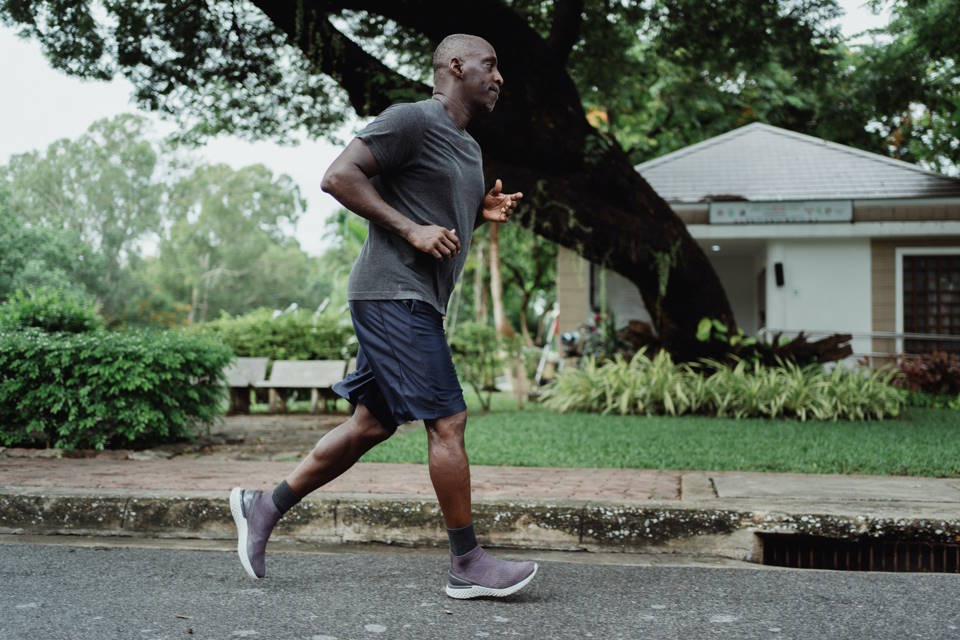As a beginner, running can feel like a daunting task, especially if you’re not sure how to pace yourself or overcome common difficulties like breathing issues or fatigue. Whether you’re looking to improve your endurance, speed, or simply run more comfortably, it’s important to have a basic understanding of the fundamentals. We’ll cover some frequently asked questions about running, including how long it takes to run a mile, how to run faster, and how to breathe properly when running. We’ll also explore some common challenges runners face, such as why your chest might burn during a run or why running in cold weather could be harmful. By the end of this, you’ll feel more confident and ready to take on your next run!
Introduction
Running a mile can be used as a benchmark for cardiovascular fitness and endurance. Whether you’re a beginner or an experienced runner, you may wonder how long it should take you to complete a mile. The answer depends on various factors, such as age, gender, fitness level, and training.
If you’re a beginner or haven’t been active in a while, it may take you anywhere from 12 to 20 minutes to run a mile. This is perfectly normal and should not discourage you from continuing to run. As you build up your endurance and fitness, you’ll be able to run faster and longer.
- Age and gender: Generally speaking, younger people tend to run faster than older people, and men tend to run faster than women due to differences in muscle mass and oxygen uptake. However, these are just general trends and do not apply to everyone.
- Fitness level: Your level of fitness is one of the most important factors that determine how long it will take you to run a mile. The more fit you are, the easier it will be to run a mile at a faster pace. If you’re not sure about your fitness level, you can take a fitness test or consult a trainer.
- Training: Training plays a crucial role in improving your running performance. By following a structured training plan that includes intervals, tempo runs, and long runs, you can increase your speed and endurance over time. It’s also important to rest and recover between workouts to prevent injuries and burnout.
However, it’s important to note that there is no universal ideal time for running a mile. Everyone’s body is different, and what matters most is that you’re making progress towards your personal goals and enjoying the process. As long as you’re putting in the effort and staying consistent, you’ll get there eventually.
How Can You Run Faster?
Running is one of the simplest and most effective ways of staying fit and healthy. However, it takes a certain level of fitness and stamina to be able to run long distances at a good pace. Whether you are a professional or a beginner, there is always a scope for improving your speed and running better. We will give you some tips and strategies on how you can run faster and improve your overall running performance.
- Set Realistic Goals: The first step towards running faster is setting realistic goals for yourself. You should aim to gradually increase your running speed and distance over a period of time, instead of trying to accomplish everything at once. Start by setting small goals for yourself, such as running an extra mile or shaving off a few seconds from your usual running time.
- Focus on Your Running Form: Your running form plays a crucial role in determining your speed and stamina. Make sure that you maintain an upright posture, keep your arms relaxed, and land on your midfoot instead of your heel. This will help you maintain your speed and endurance over long distances.
- Incorporate Interval Training: Interval training is a great way to improve your speed and running performance. It involves alternating between high-intensity sprints and low-intensity recovery periods, helping you build your speed and endurance over time. Start by incorporating interval training into your regular running routine, gradually increasing the intensity and duration of your sprints as you progress.
How Fast Is Usain Bolt’s Mile?
Usain Bolt is one of the greatest sprinters of all time. His incredible speed and athleticism have earned him multiple gold medals and world records. But how fast is he when it comes to running a mile? Let’s take a closer look at Usain Bolt’s mile time and what it means for runners everywhere.
First, it’s important to understand that Usain Bolt is a sprinter, not a distance runner. He specializes in the 100m, 200m, and 4x100m relay events. So, while he’s certainly capable of running a mile, it’s not his area of expertise. As a result, there’s no official record of Usain Bolt’s mile time. However, we can make some educated guesses based on his other performances.
- For example, in 2009, Usain Bolt set the world record for the 100m with a time of 9.58 seconds.
- In 2012, he set the world record for the 200m with a time of 19.19 seconds.
- And in the 4x100m relay at the 2012 Olympics, Bolt and his Jamaican teammates set a new world record with a time of 36.84 seconds.
Based on these performances, it’s safe to say that Usain Bolt is incredibly fast. If he were to run a mile at his maximum speed, he could potentially do it in around 3 minutes and 43 seconds. However, it’s important to note that this is just an estimate and there’s no way to know for certain.
| Main Point | Additional Information |
|---|---|
| Usain Bolt is a sprinter, not a distance runner. | He specializes in the 100m, 200m, and 4x100m relay events. As a result, there’s no official record of Usain Bolt’s mile time. |
| Usain Bolt’s incredible speed | In 2009, Usain Bolt set the world record for the 100m with a time of 9.58 seconds. In 2012, he set the world record for the 200m with a time of 19.19 seconds. And in the 4x100m relay at the 2012 Olympics, Bolt and his Jamaican teammates set a new world record with a time of 36.84 seconds. |
| Usain Bolt’s potential mile time | If he were to run a mile at his maximum speed, he could potentially do it in around 3 minutes and 43 seconds. However, it’s important to note that this is just an estimate and there’s no way to know for certain. |
So, while we may never know Usain Bolt’s official mile time, we can certainly appreciate his incredible speed and athleticism. And for runners looking to improve their own mile times, it’s important to remember that everyone has their own strengths and weaknesses. While Usain Bolt may not be a distance runner, his dedication to his craft and rigorous training regimen can certainly serve as inspiration for anyone looking to improve their performance.
How Do You Breathe When Running?
Running is a great exercise that not only helps to keep you fit but also helps to improve your mental health. However, as easy and fun as it may seem, running requires proper breathing technique to avoid fatigue and injury. So how do you breathe when running?
The first thing to consider is to breathe in a way that supports your body’s oxygen needs. When running, it is important to breathe in through your nose and out through your mouth. This pattern helps to regulate the air that enters your lungs and ensures that you get enough oxygen to fuel your muscles. Breathing through your nose also helps to filter out allergens and dust in the air before they get to your lungs.
The second thing to consider is rhythmic breathing. Rhythmic breathing is all about coordinating your breath with your steps. This helps to maintain a steady flow of oxygen to your muscles and prevents cramping and fatigue. The most common rhythmic breathing pattern is inhaling for three steps and exhaling for two steps. However, you can choose a pattern that works best for you.
- Inhale for three steps and exhale for two steps
- Inhale for two steps and exhale for two steps
- Inhale for two steps and exhale for one step
The third thing to consider when breathing while running is to breathe with your diaphragm. The diaphragm is a muscle located below the lungs that helps in breathing. Breathing with your diaphragm helps to increase your lung capacity and reduces the amount of work your chest and shoulders do. To breathe with your diaphragm, inhale deeply to the count of three and feel your stomach expand. Exhale to the count of two and feel your stomach contract.
Breathing when running is essential for achieving your fitness goals. Proper breathing technique can improve your performance, prevent injuries and increases your endurance level. Therefore, practice slow and deep breathing using the techniques highlighted above and with time, they will become second nature to you.
How Do You Run Without Getting Tired?
Running is an excellent form of exercise that has numerous benefits for both the mind and body. However, some people often experience fatigue and tiredness while running, which can significantly hinder their performance and motivation. If you’re one of these people, you may be wondering how you can run without getting tired. Fortunately, there are several strategies and techniques you can try that can help boost your endurance and energy levels while running.
One effective way to run without getting tired is by maintaining a steady pace. It’s common for runners to start out at a fast pace, only to tire out quickly and have to slow down. Instead, start by running at a comfortable pace that you can maintain for an extended period. You can gradually increase your speed as you build your endurance over time. Moreover, having a consistent and steady pace is more sustainable and less taxing on your energy levels in the long run.
- Another helpful tip to prevent fatigue while running is to focus on your breathing techniques. Proper breathing can help you supply more oxygen to your body and reduce muscular fatigue. Try to inhale through your nose and exhale through your mouth while running. You can also use a breathing rhythm, such as inhaling for three steps and exhaling for two steps, to ensure you’re breathing efficiently.
- It’s also crucial to stay hydrated when running. Dehydration can cause fatigue, dizziness, and other health problems that can negatively impact your performance. Make sure you drink enough water before, during, and after your runs. Carry a water bottle with you during your runs, or map out your route around water fountains or other sources of hydration.
In addition, proper nutrition and rest can also play a significant role in helping you run without getting tired. A healthy, balanced diet that includes carbohydrates, proteins, and healthy fats can provide the energy and nutrients you need for endurance runs. Make sure you’re getting enough rest and sleep to allow your body to recover from your workouts and build strength.
Why Does You Chest Burn When You Run?
Have you ever experienced chest pain or a burning sensation when running? This is a common issue for many runners and can be concerning. It is important to understand the possible causes of chest burning during running so that you can take the necessary steps to prevent it.
One possible cause of chest burning during running is acid reflux. This is when the acid from the stomach flows back up into the esophagus and causes irritation and burning. To prevent this, try avoiding certain foods before running that can trigger acid reflux, such as spicy or acidic foods. Additionally, avoid eating large meals before running and give yourself enough time to digest your food before hitting the pavement.
- Another possible cause of chest burning during running is improper breathing techniques. Many runners tend to take shallow breaths from the chest rather than deep breaths from the diaphragm. This can lead to hyperventilation and chest pain. To prevent this, focus on taking deep breaths from the diaphragm during your runs.
- Poor posture can also contribute to chest burning during running. If you hunch forward or tense up your shoulders, it can restrict your breathing and cause discomfort in the chest. Make sure to maintain proper posture while running, keeping your shoulders relaxed and your back straight.
| Causes of Chest Burning During Running | Prevention Methods |
|---|---|
| Acid reflux | Avoid trigger foods before running and allow enough time to digest |
| Improper breathing techniques | Focus on taking deep breaths from the diaphragm |
| Poor posture | Maintain proper posture while running, keeping shoulders relaxed and back straight |
Why Is It Bad to Run in the Cold?
Running in the cold can be quite a task, especially if you live in places that get really cold. It’s hard not to fall into the temptation of staying indoors, wrapped up in a warm blanket. Nonetheless, as runners, we know that consistency is key. We can’t let a bit of cold weather get in the way of our fitness goals. However, running in the cold can also have adverse impacts on our health. So, why is it bad to run in the cold?
Running in the cold can lead to a range of illnesses. The most common of these is the common cold. The cold virus thrives in cold weather, which makes it easier to get infected. When we run in the cold, we’re exposed to the elements, and our body finds it harder to control its core temperature. Once our core temperature drops, it becomes easier for viruses to take hold of our system, leading to nasal congestion, sore throat, cough, etc. Additionally, running in the cold can also lead to joint pain or inflammation, especially if you’re not adequately warmed up.
Another reason why running in the cold is not recommended is that it can lead to dehydration. It’s natural to think that we don’t need to drink much water when we run in the cold since we’re not sweating as much. However, when we breathe in cold air, it tends to be dry, and our lungs have to work harder to humidify it. This results in moisture loss from our body, leading to dehydration. In severe cases, dehydration can lead to fatigue, dizziness, and even fainting.
So, what can we do to mitigate these risks?
- The first and most important step is to dress appropriately when you run in the cold. Make sure you’re wearing moisture-wicking fabrics that keep you dry and warm. Layers are the key to staying warm as they trap air between them, providing insulation. You can always remove a layer if you start feeling warmer.
- Secondly, it’s essential to warm up correctly before you start running. When it’s cold, your muscles tend to be stiffer, which can lead to injury. Start with a slow warm-up routine that includes dynamic stretches and light jogging.
- Finally, don’t forget to drink plenty of water before, during, and after your run. Staying hydrated is crucial, no matter what the weather is.
If you’re not sure about whether it’s safe to run in the cold, consult your doctor. They’ll be able to give you specific advice depending on your health history and current fitness level.
In conclusion, running in the cold is not necessarily bad for you, but it does come with a set of risks. It’s essential to take proper precautions to avoid getting sick or getting injured. Dressing appropriately, warming up correctly, and staying hydrated are all crucial steps you can take to minimize these risks. Remember always to listen to your body and adjust your routine as necessary. Stay safe and happy running!
















